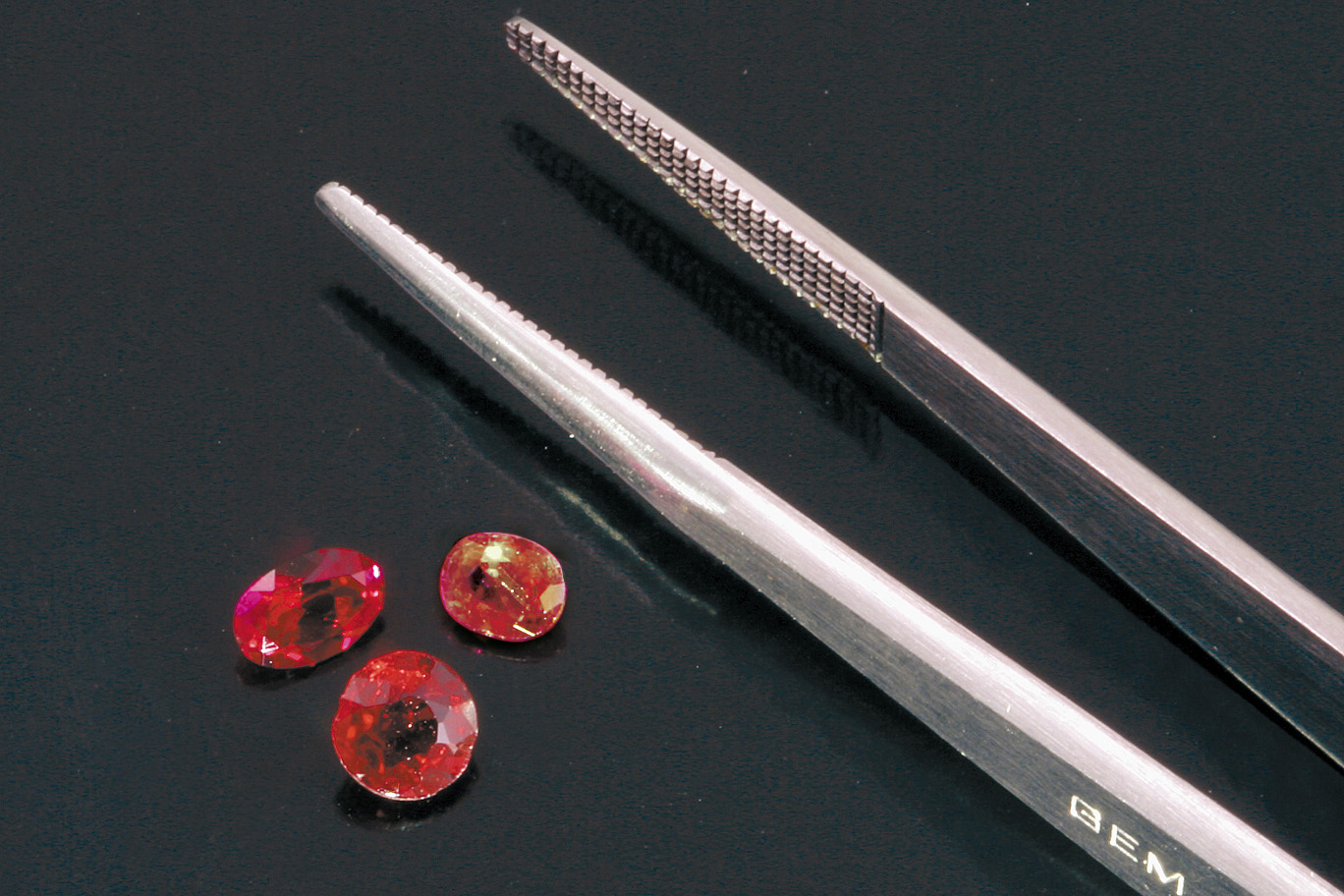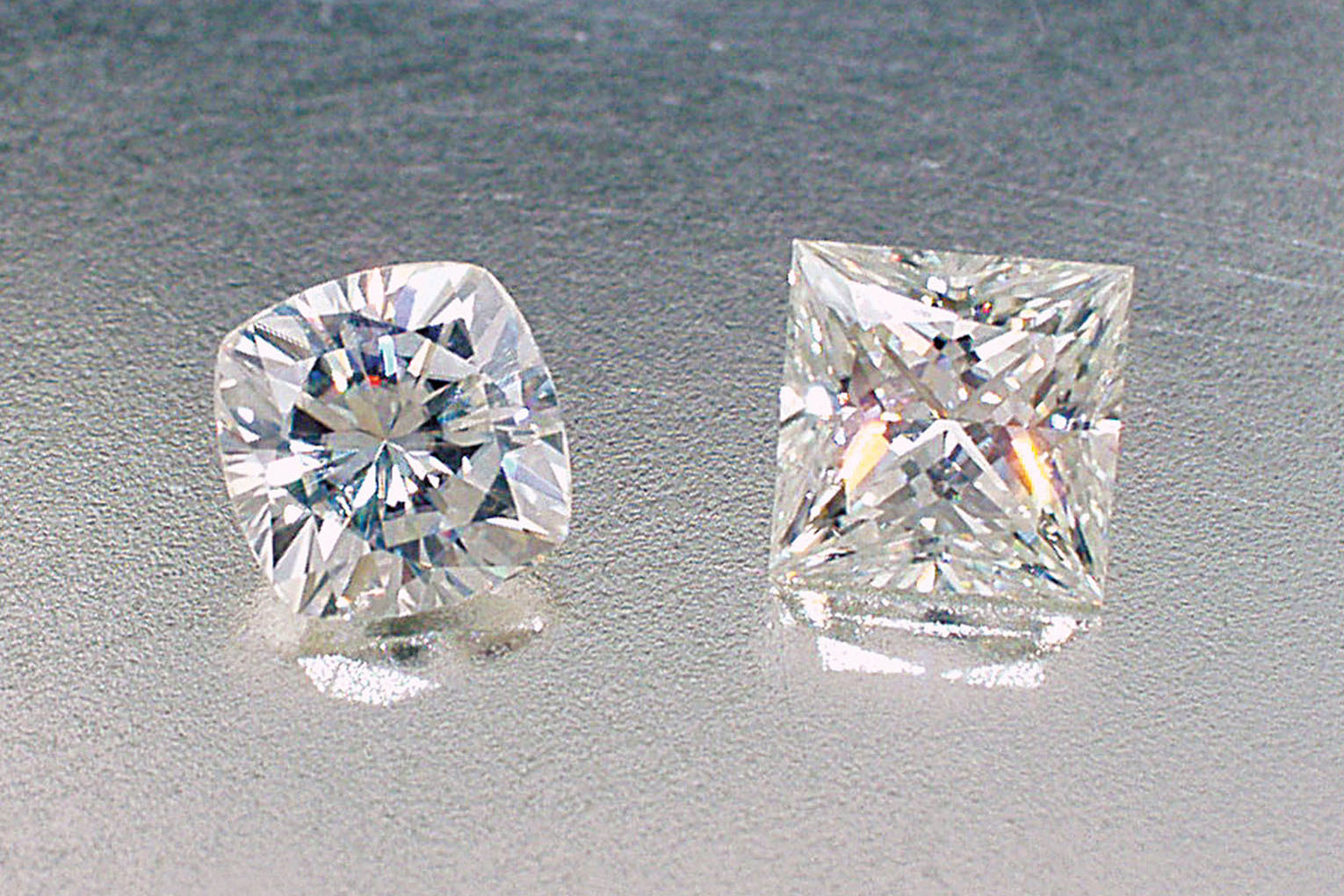You’ll often be called on to separate natural gems from manmade materials. Natural gems form without human help. Most are produced by the earth’s rock-formation processes. Others come from animals, and a few come from plants. Sapphire and quartz are examples of the first type, natural pearls and coral of the second, amber the third.
Synthetic gems are reproductions of natural gems, with basically the same composition and structure as their natural counterparts. Synthetic versions of emerald, ruby, sapphire, spinel, and quartz are popular and fairly common in the marketplace.
An imitation gem or simulant is any type of material—natural or manmade—that looks like another gem. Manmade glass and plastic are probably the most familiar materials that serve as imitations. This category also includes some natural and synthetic gems. For example, natural colorless zircon was once used as a diamond simulant. A gem imitation might also be an assembled stone, in which two or more pieces of material are fused or cemented together.
Most inexpensive birthstone jewelry is set with imitations made of synthetic corundum or synthetic spinel. For example, synthetic light blue spinel, rather than synthetic aquamarine, often substitutes for natural aquamarine.
There are some manmade simulants that are unlike any natural gem-quality materials. These include synthetic cubic zirconia (CZ), synthetic moissanite, and synthetic rutile. All three have counterparts that occur in nature, but they’re rare and not at all practical for jewelry use.








